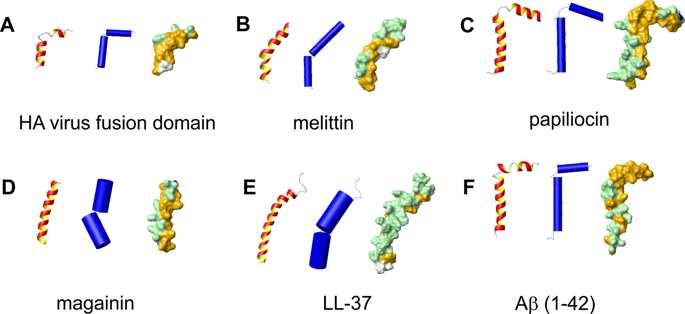Communications Biology ( IF 5.2 ) Pub Date : 2020-03-19 , DOI: 10.1038/s42003-020-0865-9 Annalisa Pastore , Francesco Raimondi , Lawrence Rajendran , Piero Andrea Temussi

|
The Aβ peptides causally associated with Alzheimer disease have been seen as seemingly purposeless species produced by intramembrane cleavage under both physiological and pathological conditions. However, it has been increasingly suggested that they could instead constitute an ancient, highly conserved effector component of our innate immune system, dedicated to protecting the brain against microbial attacks. In this antimicrobial protection hypothesis, Aβ aggregation would switch from an abnormal stochastic event to a dysregulated innate immune response. In this perspective, we approach the problem from a different and complementary perspective by comparing the structure and sequence of Aβ(1-42) with those of bona fide antimicrobial peptides. We demonstrate that Aβ(1-42) bears convincing structural similarities with both viral fusion domains and antimicrobial peptides, as well as sequence similarities with a specific family of bacterial bacteriocins. We suggest a model of the mechanism by which Aβ peptides could elicit the immune response against microbes.
中文翻译:

为什么阿尔茨海默氏症的Aβ肽与抗菌肽具有结构相似性?
与阿尔茨海默病有因果关系的Aβ肽已被视为在生理和病理条件下通过膜内裂解产生的看似无目的的物种。但是,越来越多的人提出,它们可以代替构成我们先天免疫系统的古老,高度保守的效应子组件,致力于保护大脑免受微生物的攻击。在这种抗微生物保护的假设中,Aβ聚集将从异常的随机事件转换为先天免疫反应失调。从这个角度来看,我们通过比较Aβ(1-42)与善意抗菌肽的结构和序列,从不同和互补的角度解决了这个问题。我们证明,Aβ(1-42)具有令人信服的与病毒融合域和抗菌肽的结构相似性,以及与细菌细菌素特定家族的序列相似性。我们提出了一种机制模型,通过该模型Aβ肽可以引发针对微生物的免疫反应。











































 京公网安备 11010802027423号
京公网安备 11010802027423号